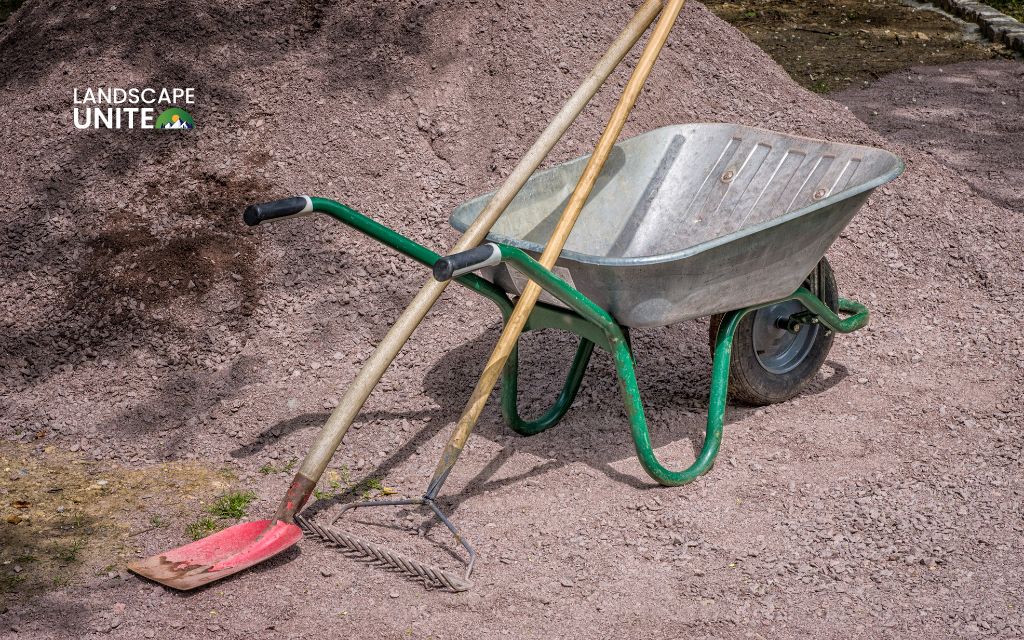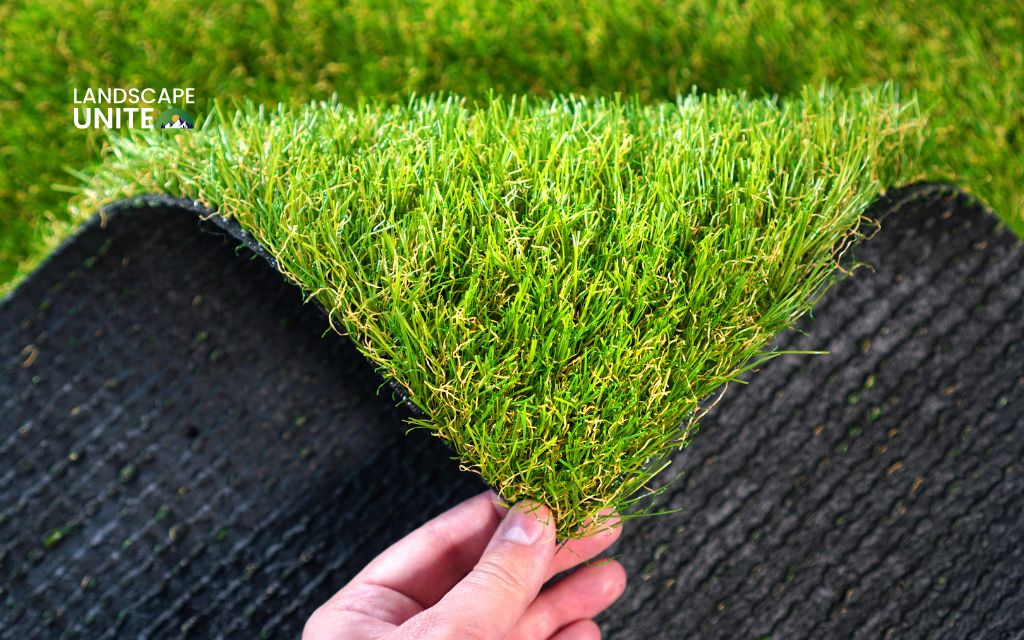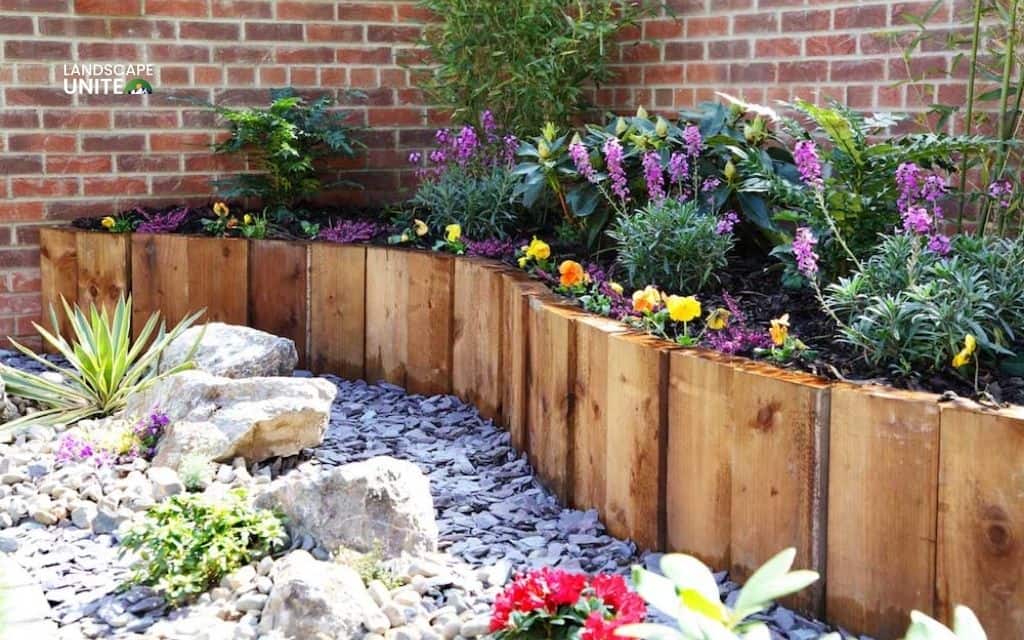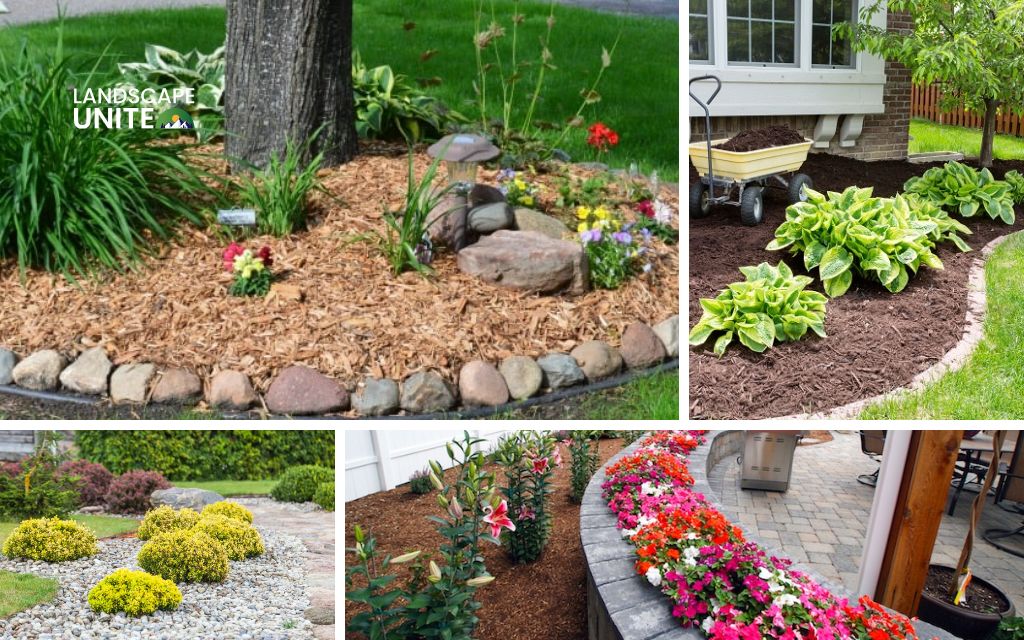Installing artificial grass represents a significant shift from traditional lawn care to a modern, sustainable approach to landscaping. This synthetic turf solution eliminates the need for constant watering, mowing, and fertilizing while providing a consistently beautiful appearance throughout all seasons.
The installation process involves several critical steps that ensure your artificial lawn will look natural, drain properly, and withstand years of use.
This comprehensive guide walks you through every aspect of artificial grass installation, from planning and preparation to final touches, helping you create the perfect synthetic lawn for your home.
Tools & materials for artificial grass installation
Gather everything you need to install artificial grass with these essential tools and materials for a successful installation.
Tools
- Utility knife or scissors: Sharp cutting tools for trimming artificial grass to precise dimensions and creating clean edges around borders and obstacles
- Shovel or spade: Heavy-duty digging tools for excavation and soil preparation during the ground preparation phase
- Garden rake: For leveling surfaces, spreading base materials evenly, and creating smooth grade transitions
- Measuring tape: Essential for accurate area measurements and ensuring proper material calculations
- Wheelbarrow: For efficiently transporting soil, sand, gravel, and other materials throughout the installation site
- Staple gun or turf nails: To securely fasten the artificial grass to the ground and prevent shifting over time
- Hand tamper or roller: For compacting soil and base materials to create a stable foundation
- Stiff-bristled broom: For brushing grass fibers and distributing infill material evenly

Materials
- Artificial grass rolls or tiles: Choose the appropriate size, pile height, and style based on your specific lawn area and intended use
- Base material: Crushed rock or angular gravel (3-4 inches deep) for proper drainage and foundation stability
- Infill material: Silica sand or rubber granules for weight distribution, stability, and enhanced durability
- Weed barrier fabric: High-quality landscape fabric to prevent weed growth beneath the artificial turf
- Landscape edging: Durable border materials to define clean edges and prevent turf movement
- Seaming tape and adhesive: For joining multiple pieces of artificial grass with invisible, professional-quality seams
- Landscape staples: To secure weed barrier fabric and provide additional turf anchoring points
How to install artificial grass: Step by step guide
Follow these detailed, step-by-step instructions to install artificial grass in your garden or lawn with professional results.
Step 1: Clear and excavate the area
Begin by removing all existing grass, weeds, rocks, and debris from the installation site. Excavate the area to 2-3 inches below your desired finished grade to accommodate base materials while maintaining proper elevation relative to surrounding hardscapes.
Step 2: Level ground and install weed barrier
Use your garden rake to create a level surface with gentle slopes away from buildings toward drainage areas. Install weed barrier fabric across the entire area, overlapping seams by 6 inches and securing with landscape staples to prevent future weed growth.
Step 3: Compact the soil base
Compact the exposed soil using a hand tamper or mechanical roller, focusing extra attention on previously soft or disturbed areas. Proper compaction prevents settling that could create uneven surfaces in your finished artificial grass installation.
Step 4: Install and level base material
Spread crushed rock or gravel base material evenly across the prepared area, maintaining a consistent 3-4 inch depth. Level the base using your garden rake while maintaining proper drainage slopes throughout the installation area.
Get more information on what to put under artificial grass for drainage for your garden in this article.

Step 5: Compact base and test drainage
Compact the base thoroughly using a mechanical roller, making multiple passes for maximum density. Test drainage by applying water to various areas – water should infiltrate quickly without pooling on the surface.
Step 6: Position and trim artificial grass
Unroll your artificial turf carefully, positioning all pieces with grass piles running in the same direction. Allow material to acclimate, then trim edges precisely using your utility knife, making multiple shallow cuts for clean, accurate dimensions.
Don’t know how to cut artificial grass properly? Discover step-by-step guide in this blog.
Step 7: Secure turf and create seams
Secure your artificial grass using staples or turf nails every 6-8 inches along edges and 12-18 inches throughout the field. Join multiple pieces using specialized seaming tape and adhesive for invisible, professional-quality joints.
Step 8: Apply and distribute infill material
Distribute infill material evenly across your artificial turf using a drop spreader or hand broadcasting. Apply infill gradually in multiple light applications to ensure even distribution across the entire synthetic lawn surface.
Step 9: Brush fibers and compact infill
Brush grass fibers upright using a stiff broom or power brush, working infill material down between individual blades. Apply final light compaction using a lightweight roller to settle infill and ensure optimal turf performance.
Step 10: Install edging and final cleanup
Install landscape edging around the perimeter for clean, defined borders that prevent turf shifting. Complete final trimming of excess material, clean the work area thoroughly, and inspect the installation for any areas requiring adjustment.

Maintenance and care of artificial grass
These simple maintenance prevents matting and keeps your synthetic lawn looking fresh:
- Regular sweeping or brushing removes debris and maintains your fake grass’s upright appearance.
- Use a stiff-bristled broom or specialized turf brush, working against the grain to lift flattened fibers.
- Rinse your artificial turf periodically using a garden hose to remove dust, pollen, and light debris.
- Focus water pressure on areas with visible accumulation, allowing natural drainage to carry away loosened particles.
- Address stains promptly using mild detergent and soft brushes. Most spills clean easily with soap and water, but prompt attention prevents permanent staining.
- Avoid harsh chemicals or aggressive scrubbing that could damage grass fibers or backing materials.
Gain a deeper understanding of the process for maintaining artificial grass with this guide.
Cost of installing artificial grass
Understanding installation costs helps you budget effectively and choose between DIY and professional installation options.
Artificial grass installation represents a significant upfront investment that provides long-term value through reduced maintenance costs.
- DIY artificial grass installation typically costs between $4-10 per square foot, depending on material quality and site conditions. Premium synthetic turf products command higher prices but offer superior durability and appearance. Factor in tool rental costs if you don’t own necessary equipment.
- Professional installation ranges from $8-15 per square foot, including materials and labor. This investment includes expertise, proper equipment, and warranty coverage that protects your investment. Compare multiple quotes when considering professional installation services.
Need inspiration for artificial grass? Check out these articles:
14 innovative front yard designs using artificial grass and rocks
15 stylish artificial grass ideas for small gardens in modern homes
9 inspiring backyard artificial grass concepts to transform your dream yard
Conclusion
Installing artificial grass transforms your outdoor space into a beautiful, low-maintenance landscape that provides years of enjoyment. This comprehensive guide equips you with knowledge needed for successful DIY projects or informed discussions with professional installers.
Whether you choose to install artificial grass yourself or hire professionals, understanding the complete process helps ensure quality results.
Proper planning, quality materials, and attention to detail create synthetic lawns that rival natural grass appearance while providing superior convenience and durability.
Discover more about artificial grass in our landscape hub with tons of knowledge to create your best garden. Our expert resources cover everything from pet-friendly artificial grass options to creative design ideas that maximize your outdoor living space potential.
Frequently asked questions (FAQs)
How long does artificial grass last?
Quality artificial grass installations can last 15-25 years with proper maintenance. Premium products with proper installation often exceed expected lifespans significantly.
Is artificial grass safe for pets and children?
Modern artificial turf uses non-toxic materials and includes antimicrobial treatments that resist bacteria growth. Many products specifically target pet and family applications, featuring enhanced drainage and easy cleaning properties. Choose products certified for your specific usage requirements.
Can I install artificial grass over concrete or dirt?
Yes, artificial grass installation works over both concrete and dirt surfaces, though each requires different preparation techniques. Concrete installations need drainage solutions and cushioning layers, while dirt installations require excavation and proper base materials for optimal results.
How do I prevent my artificial grass from smelling?
Proper drainage, regular cleaning, and quality infill materials prevent odor development. Pet owners should rinse areas regularly and consider antimicrobial infill products. Address spills promptly and ensure adequate airflow around your synthetic lawn installation.
What’s the difference between high-quality and low-quality artificial grass?
High-quality artificial turf features realistic appearance, durable backing materials, UV resistance, and comprehensive warranties. Premium products use advanced fiber technology and superior manufacturing processes that ensure long-term performance and appearance compared to budget alternatives.


